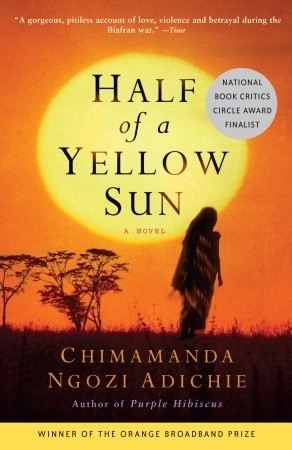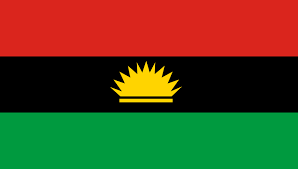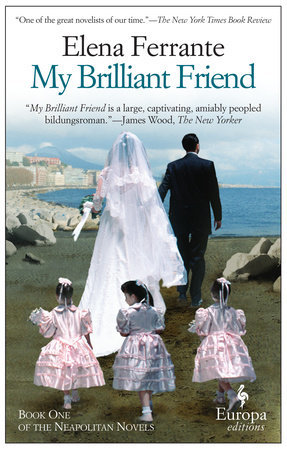August reads (Book Reviews)
Book #1: Half of a Yellow Sun by Chimamanda Ngozi Adichie

Adichie’s second acclaimed novel, Half a Yellow Sun, lives up to its praise. The story follows the Ozobia family and their intimate connections throughout Nigeria’s tumultuous post-independence history. The novel begins in the early 1960s just after the country has gained independence. Chief Ozobia has become a wealthy man by leveraging his political connections to advance his business interests. His daughter Kainene has become the heir-apparent to the family business whilst their other daughter Olanna has pursued the path of higher education and ends up with marrying a radical university professor named Odenigbo. Like a great Tolstoy epic, we see the characters change as their relationships form and break and as their financial fortunes rise and fall in response to larger historical events. As the Ozobia’s are an Igbo family, they end up being on the losing side of the devastating Nigerian Civil War (aka Biafran War) which follows the collapse of the First Republic.
The two other main characters, Ugwu and Richard, become attached to the Ozobia family through different means. Ugwu begins the novel as an illiterate village boy “from the bush” who becomes Odenigbo’s house servant. As a passionate Igbo nationalist , Odenigbo sees it as his duty to educate the boy. Ugwu evolves from being a obsequious servant to highly-educated young man. Though education gives Ugwu a sense of superiority, he continues to have a naive reverence of his master and madam. In one scene Ugwu thinks that his master might be having an affair, and terrified at the prospect of a rupture in the household, tries to prevent Odenigbo from being tempted into a moral lapse. Richard Churchill is an English writer who travelled to Nigeria after he became fascinated with Igbo art. His marriage to Kainene is unpopular with both the expatriate community and the Ozobias. Intensely insecure and unsure of himself, Richard is glad to be part of the Biafran cause as it gives him an identity. He abandons multiple book writing attempts after coming to the conclusion that it is “not his story to tell”.

The eponymous yellow sun of the Biafran flag
Though not an expert about Nigerian culture, my sense is that Adichie accurately captures the mores and spirit of 1960s Nigerian culture – at least for an educated Igbo family.[1] The novel is sympathetic to the Biafran cause, although this is to be expected given the characters we follow are all Igbos. Whether or not the sense of Biafran unity was as strong as it is portrayed, it is clear that the Biafran elites were themselves corrupt. Kainene’s friend Colonel Madu describes how Ojukwo has government officials arrested so he can sleep with their wives. In another scene, Olanna is invited to a former friend’s house who has now become a government big man. She is appalled to be offered cake during the height of a famine induced by the Nigerian government’s food blockade. Half of a Yellow Sun is an excellent book both because it is written well and because it artfully manages the balance between history and personal drama. It highlights the unchanging aspects of the human condition throughout love, war, and betrayal and provides a fascinating insight into post-independence Nigerian cultural life.
Book #2: My Brilliant Friend by Elena Ferrante

The popularity of a book is likely as much of a surprise to its author as it is to its readers. Who would have guessed that Piketty’s dry tomb Capital in the 21st Century would become a best seller and become the zeitgeist for the fight against income inequality? Similarly, I imagine the Italian author Elena Ferrante, which is a pseudonym (no one knows her actual identity), would be shocked that her Neapolitan Quartet has gone to sell over 10 million copies globally. My Brilliant Friend is the first novel in the quartet and tells the story of Lenu Greco and Lila Cerullo’s childhood and adolescence in Naples in the 1950s. Their society is one of poverty and violence. A highly attuned honour culture means that the slightest transgressions provoke brutal physical assaults. Though Lenu’s family is poor, her remarkable performance at school, combined with some cajoling by her teacher, forces her reluctant parents to send her to high school. Throughout the novel Lila’s natural intelligence is the cause of much reverence and jealousy for Lenu, although Lila encourages Lenu on to higher things.
My Brilliant Friend is definitely a writer’s book. The endorsement’s on its jacket cover speak to this: Jhumpa Lahiri, Alice Sebold, etc. Its prose is lovely and subtle throughout (great credit to the translator Ann Goldstein). For a reader like myself, I would have preferred a story that was more explicit of the sociological and economic forces at play in Naples in the 1950s.[2] Although clearly located at a specific point in Italy’s history, there is nevertheless a sort of dreamless, almost timeless, quality about the characters. Though it is not the sort of book I would usually read, I can acknowledge that it is objectively very good. Having formed a sympathetic bond with the main characters, I would be open to reading the other books in the series.
-
One of my favourite lines from the book is when Kainene dismisses Odenigbo’s socialist vision for Biafra. Kainene snorted. “Socialism would never work for the Igbo.” She held the brush suspended in midair. “Ogbenyealu is a common name for girls and you know what it means? ‘Not to Be Married to a Poor Man.’ To stamp that on a child at birth is capitalism at its best.” ↩
-
In the same way that Half of a Yellow Sun clearly captured the sociological essence of Nigeria in the 1960s. ↩
